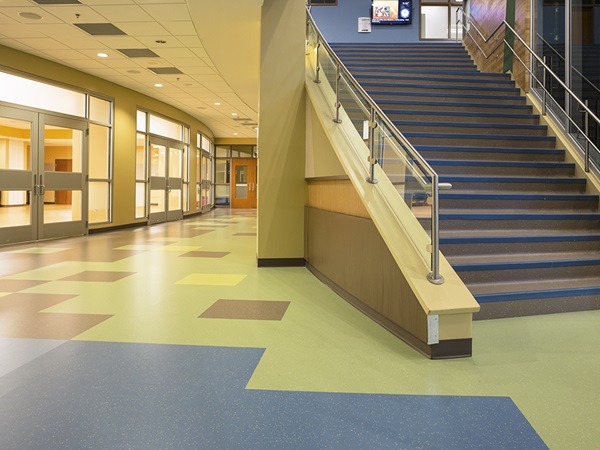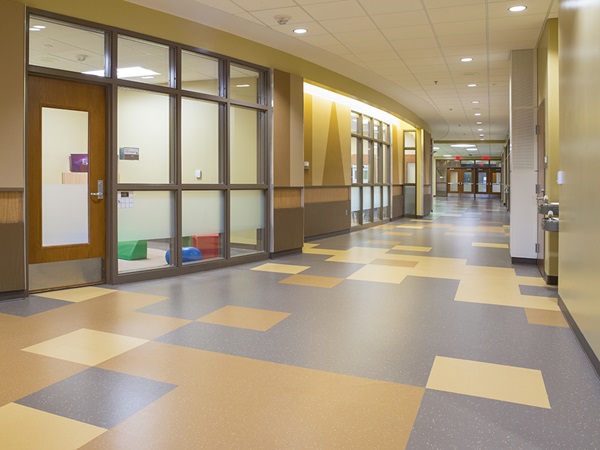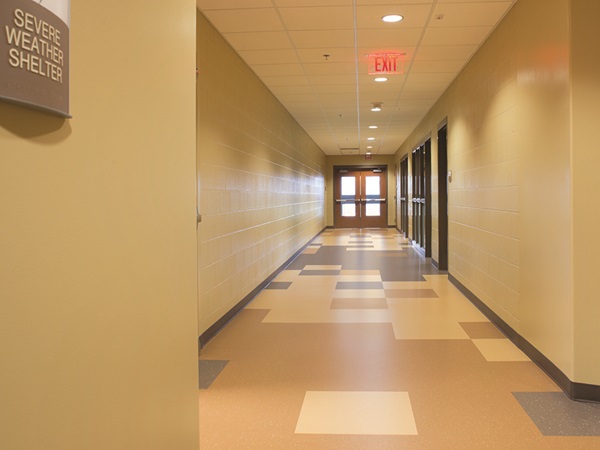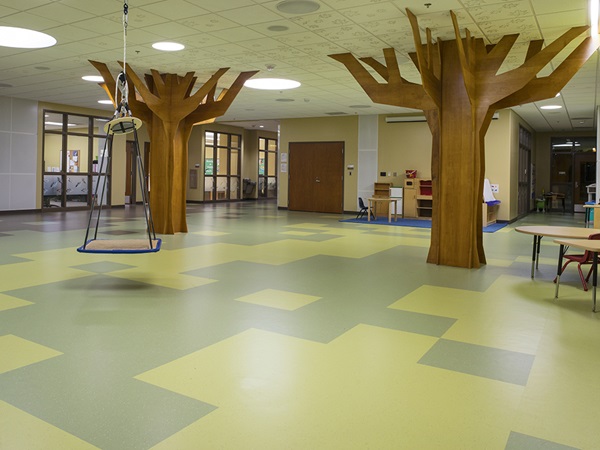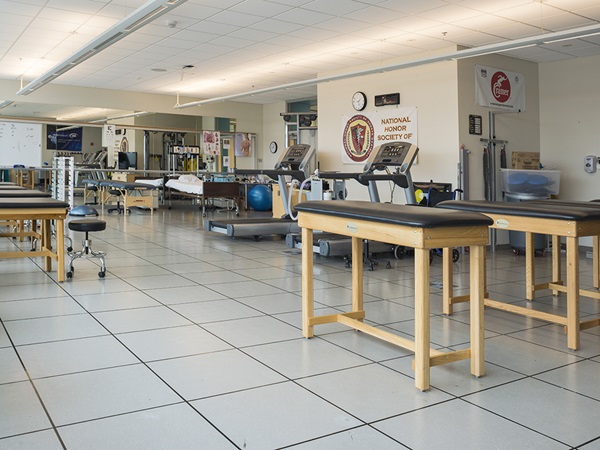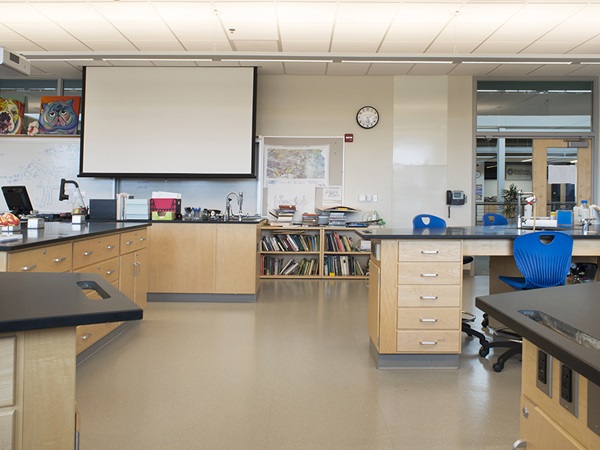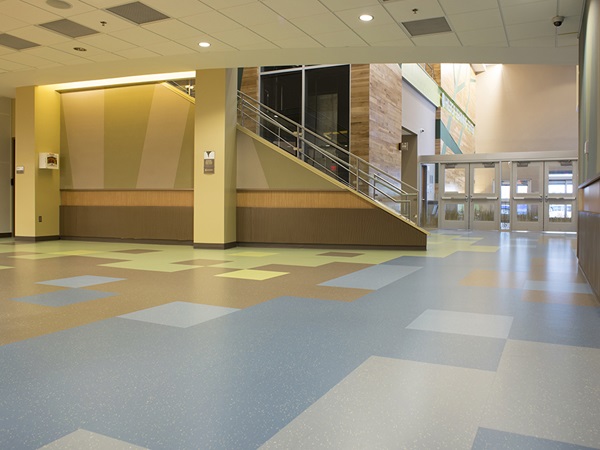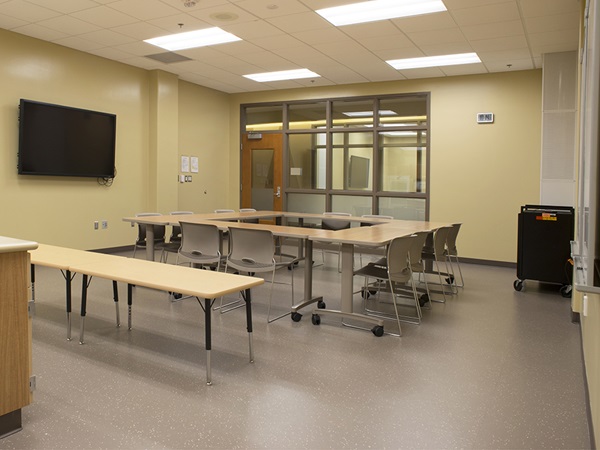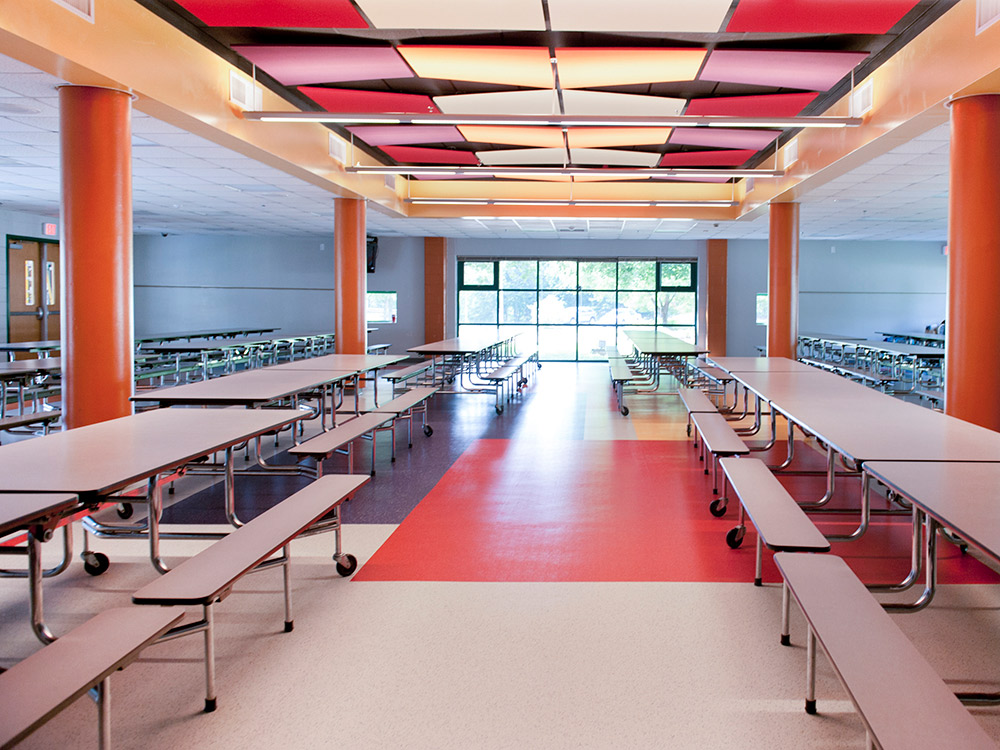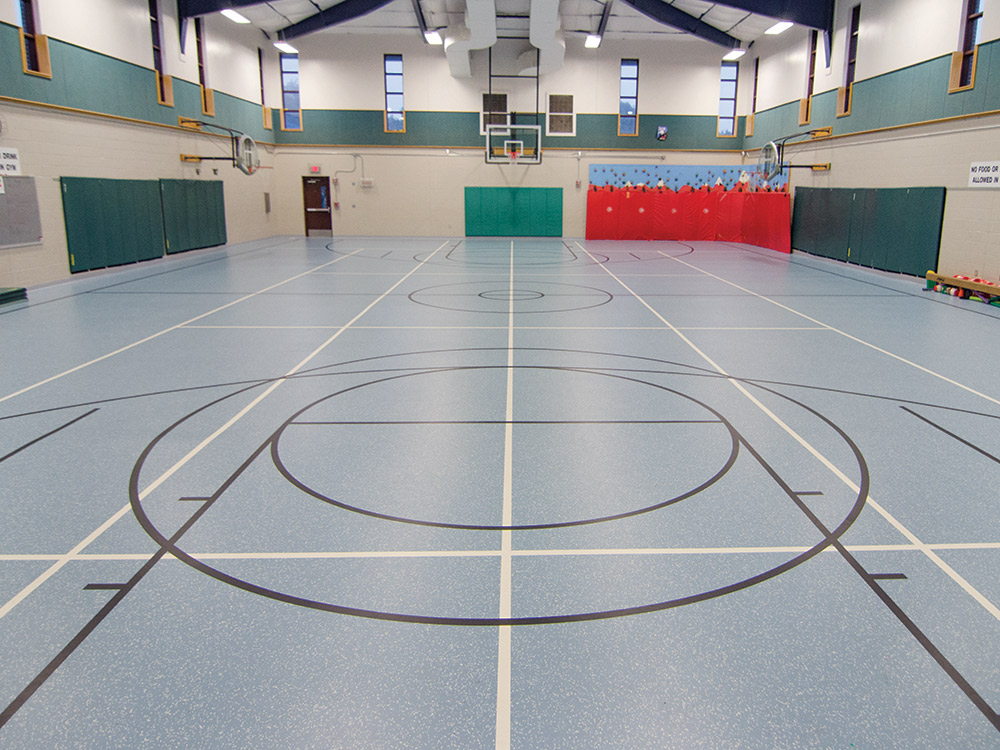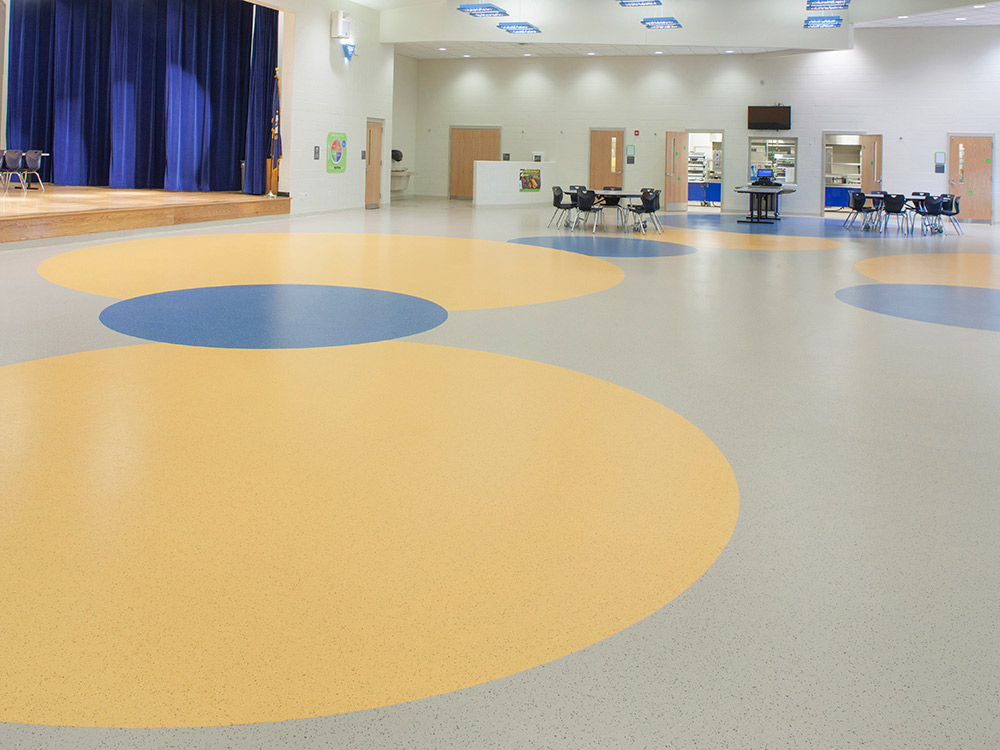Paying close attention to the learning environments it provides, Blue Valley conducts a bi-annual survey to gather feedback directly from the community. Of the most recent respondents, 97 percent graded the quality of the district’s buildings either an A or B. The decision to use nora® flooring for hard-surface areas supports the district’s mission to provide the best setting available, taking into consideration indoor air quality, acoustics and the elimination of chemicals needed for cleaning.
School officials were not surprised to learn that 98 percent of respondents most recently questioned thought the quality of the school district positively impacts economic development and property values. “The community consistently ranks highly and values the education we are providing our students,” says Becky Miller, communications specialist. “Their involvement is an important part of the high-level education we provide.”
When it comes to the 34 schools within the district, much consideration is given to the spaces being renovated, added or newly built. “The environment we work to achieve is one that promotes good student learning,” says Kent Andersen, design and construction project manager. “So, whether it’s indoor air quality (IAQ), materials selections, etc., all are expected to be done well. There are many studies about what provides for the best learning environments, and we work really hard to accomplish as much of that as possible.”
Installed in corridors, stairwells, common areas, classrooms and cafeterias, nora flooring was selected because it contributes to good IAQ, acoustics and stain resistance—particularly in art and science classrooms, where floors are most likely to experience marks and spills. The addition of rubber flooring to the district has also positively impacted operations and maintenance. “Long-term maintenance is certainly a high priority for us because of the cost to maintain buildings. Costs regularly go up, and we continue to fight with budget concerns that limit our ability to hire more staff. So if we can specify low-maintenance products, it benefits us as far as the man-hours allotted to each school.”
The switch to rubber began when the district experienced problems with VCT. “We were having issues with cracks and moisture coming through, so we needed something that was able to span and move with the cracks, instead of cracking the tile like VCT would do,” says Andersen. “I stripped in some rubber and liked the way it was able to move with the slab. For that, and several other reasons previously mentioned, we ended up settling on nora.”
Blue Valley School District
Blue Valley School District Makes the Grade
Blue Valley School District, in Overland Park, KS, serves more than 22,000 students, ranging from early childhood through high school, in 34 different schools. “Our district strives to provide our kids with an education beyond expectations,” says Becky Miller, communications specialist. “Our goal is to help each student experience unprecedented academic success and unparalleled personal growth.”
Data and facts
| Building | Blue Valley School District |
| Market Segment | Education |
| Products | noraplan environcare™, noraplan sentica™ |
| Installation Year | 2014 |
Products
noraplan environcare™
Rubber flooring with a changing base color consisting of three harmoniously matched hues is complimented with characteristic granules, delivering an aesthetically appealing and functional smooth surface for heavy traffic areas.
noraplan sentica™
Rubber floor covering with a changing base color of harmoniously matched color components in a smooth surface for heavy traffic areas.

 Canada | English (US)
Canada | English (US)
